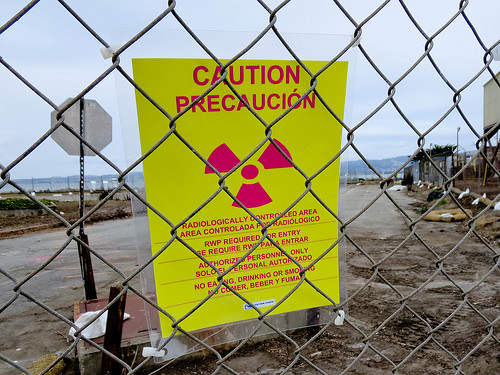Every place on Earth has at least a little radioactivity. It is found in bodies, food (not just in industrially irradiated food), the ground, and in many consumer products. The sun and outer space are sources of radiation. Radioactive materials prevalent in nature, such as those present in soils and rock formations and in the water that comes into contact with them, are called naturally occurring radioactive materials, or NORM. NORM typically does not present a problem to human health or the environment, as the radiation levels are very small, and there is generally not an exposure pathway. However, NORM can become concentrated as the result of certain human activities that also expose people and the environment to radiation hazards. Over time, this collection of individual concentrations/exposures has come to be regarded as part of a single, larger, and more complex problem—radiation contamination—referred to as TENORM (tee-norm).
Audit, Compliance and Risk Blog
Tags: Audit Standards, Health & Safety, Environmental risks, Environmental, EHS
The first significant outbreak of the mosquito-borne zika virus in the Americas was announced in Brazil in May 2015. Public health officials in the United States began to prepare responses, and have accelerated efforts in reaction to reports that the virus is spreading into U.S. territories, beginning with Puerto Rico and Florida and expanding northward. Late in April, the Occupational Safety and Health Administration (OSHA) and the National Institute for Occupational Safety and Health (NIOSH) entered the fray, by issuing joint “Interim Guidance for Protecting Workers from Occupational Exposure to Zika Virus.” The rest of this note summarizes that Guidance.
Read MoreTags: Employer Best Practices, Health & Safety, Employee Rights, EHS
The Occupational Safety and Health Administration (OSHA) requires employers to protect their employees against possible exposure to “bloodborne pathogens (BBPs).” OSHA’s Bloodborne Pathogen Standard prescribes protections for workers occupationally exposed to blood or other potentially infectious materials (OPIM). Healthcare workers are the most obvious beneficiaries, but emergency responders and others may also be regularly at risk to these exposures.
Read MoreTags: Employer Best Practices, Health & Safety, OSHA, Employee Rights, Environmental risks, EHS, Hazcom, pharmaceuticals
Can a Hospital Be Both Hygienic and Environmentally Sustainable?
Posted by Jane Dunne on Mon, May 02, 2016
When it comes to hospitals we all expect the highest standard of cleanliness and yet, we want every part of our lives to be more sustainable. Of course, when hospitals are faced with a choice that puts hygiene up against sustainability, hygiene always wins. But I wonder if it’s possible to find ways for both to win?
Read MoreTags: Health & Safety, Environmental risks, Environmental, EHS, EPA, sustainability
The U.S. Department of Transportation (DOT) defines national requirements for the transportation of hazardous materials, under what’s commonly called the Hazardous Materials Transportation Act (HMTA). DOT agencies promulgate most regulatory requirements with nationwide applicability, and delegate most administrative and oversight responsibilities to state transportation and highway patrol agencies. Delegated functions include state-level registration of motor carriers that transport hazardous materials by roadways, and licensing for their drivers.
Read MoreTags: Health & Safety, Environmental risks, Environmental, Hazcom, Transportation
The US Occupational Safety and Health Administration (OSHA) regulates thousands of chemicals, through regulatory standards directing employers to reduce worker exposures. At the broadest level, employers must evaluate basic information about every potentially hazardous chemical, and provide information to employees in compliance with OSHA's Hazard Communication Standard (I’ve blogged about changing HCS requirements here, and here). OSHA’s Air Contaminants Standard provides ambient workplace air limits for hundreds of listed contaminants. OSHA also provides more tailored requirements for classes of chemicals (such as flammables), and for types of activities that pose chemical hazards (such as welding). For a small number of especially hazardous chemicals, OSHA provides a detailed standard applicable to a single chemical—examples include asbestos, benzene, and lead. On March 25, 2016, OSHA established another single-chemical standard, for respirable crystalline silica (29 CFR section 1910.1053). Most affected employers must comply by June 23, 2018; a few provisions are phased in later, and construction employers must meet most requirements by June 23, 2017.
Read MoreTags: Health & Safety, OSHA, EHS, Hazcom
DOT Converts Nearly 100 Variances Into Regulatory Options For Hazmat Shipping
Posted by Jon Elliott on Tue, Mar 29, 2016
Federal hazardous materials transportation laws assign the Department of Transportation’s (DOT’s) Pipeline and Hazardous Materials Safety Administration (PHMSA) general authority to designate hazardous materials and prescribe regulations for the “safe transportation of hazardous materials in intrastate, interstate, and foreign commerce.” PHMSA also prescribes criteria for handling hazardous materials, including training of personnel, inspections, and standards for operating and monitoring equipment.
These laws also authorize PHMSA and other DOT units to issue "special permits" that allow variances from federal requirements for up to two years. These special permits may be renewed for up to two years each time (and up to four years for variances from transport routing requirements). In 2012 “MAP-21” (Moving Ahead for Progress in the 21st Century Act) directed PHMSA to review special permits that had been in place for at least 10 years, and to adopt regulatory revisions by October 1, 2015. PHMSA was to apply the following factors to determine the suitability for adopting a special permit into its hazardous materials regulations (HMR):
Tags: Health & Safety, EHS, Hazcom, Transportation
Even if your organization is not required to do so, you should consider the benefits or being prepared to conduct emergency responses and evacuations. Well-developed emergency plans and proper employee training (so employees understand their roles and responsibilities) likely will result in fewer and less severe employee injuries and less structural damage to the facility during emergencies. A poorly prepared plan, on the other hand, likely will lead to a disorganized evacuation or emergency response, exacerbating confusion, injury, and property damage.
Which Employers Require An EAP?
The following OSHA Standards require you to prepare an EAP as part of your compliance with their requirements:
Read MoreTags: Employer Best Practices, Health & Safety, OSHA, EHS, EPA, Hazcom, PSMS, EAP
Now in Effect: Electronic Logging Device Rules for U.S. Motor Carriers
Posted by STP Editorial Team on Tue, Feb 16, 2016
 Effective February 16, 2016, the U.S. Federal Motor Carrier Safety Administration (FMCSA) has revised the requirements for logging of commercial motor vehicle (CMV) drivers’ hours of service or “HOS.” A motor carrier operating CMVs must install and require each of its drivers to use an electronic logging device (ELD) to record the driver’s duty status no later than December 18, 2017.
Effective February 16, 2016, the U.S. Federal Motor Carrier Safety Administration (FMCSA) has revised the requirements for logging of commercial motor vehicle (CMV) drivers’ hours of service or “HOS.” A motor carrier operating CMVs must install and require each of its drivers to use an electronic logging device (ELD) to record the driver’s duty status no later than December 18, 2017.
Tags: Employer Best Practices, Health & Safety, Greenhouse Gas, ghg, Hazcom, Transportation
California Proposes Workplace Violence Prevention Requirements For Healthcare Facilities
Posted by Jon Elliott on Tue, Feb 09, 2016
Employees in the health care and social service sectors suffer workplace violence at much higher rates than in most other sectors, largely because of the higher risk from their patients and clients. In response to these risks, worker protection agencies and professional organizations have developed guidelines for workplace violence prevention in these sectors. Increasingly, worker protection laws and regulations are being revised to require these activities. Most recently, in December 2015 California has proposed to expand state requirements for security plans to include explicit workplace violence prevention programs.
Existing Requirements For Security Plans
Tags: Employer Best Practices, Health & Safety, OSHA, Employee Rights, California Legislation, EHS, Workplace violence









